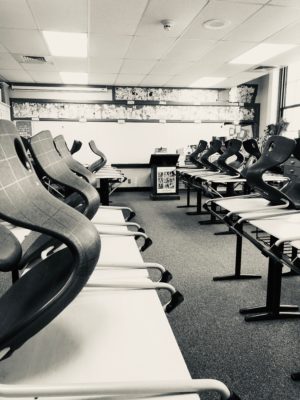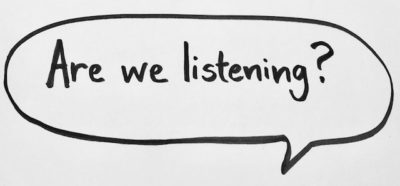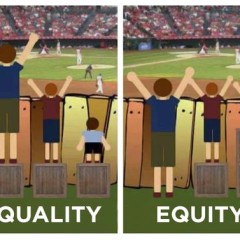Hey, teachers. How are you? Tough week, huh?
Me? I’m okay, just a bit lonelier than usual. I am alone in my classroom, alone with empty desks, blank whiteboards, and quiet halls. It is eerie and unsettling. It puts everything in perspective for me. I’m trying to consider it a gift, insomuch as I can in these difficult times.
 As you know, all schools in our state are closed, but our local administrators have some leeway in the management of the closures. The situation is fluid, and changes daily, but this is what I am currently experiencing. The school buildings are closed to the public until at least April 27. We are delivering food and grade-level learning packets via bus routes. Families who prefer can call ahead and pick up meals and supplies at our school offices during abbreviated hours. Classified staff are still busy, at least part time, doing odd jobs, disinfecting the facilities, copying the packets, preparing the breakfasts and lunches, delivering the food and supplies, and providing childcare to local first responders and healthcare workers.
As you know, all schools in our state are closed, but our local administrators have some leeway in the management of the closures. The situation is fluid, and changes daily, but this is what I am currently experiencing. The school buildings are closed to the public until at least April 27. We are delivering food and grade-level learning packets via bus routes. Families who prefer can call ahead and pick up meals and supplies at our school offices during abbreviated hours. Classified staff are still busy, at least part time, doing odd jobs, disinfecting the facilities, copying the packets, preparing the breakfasts and lunches, delivering the food and supplies, and providing childcare to local first responders and healthcare workers.
As for the teachers, we are expected to work seven-hour days and log our activities daily. This week we are preparing the learning packets, creating activities that can help our students progress without our day-to-day contact. We are asked to stay in touch with families and make weekly calls to the students in our advisories. We can clean and organize our classrooms. We can sign up for online classes. We can read books or watch online professional development videos. We can work at home if we so choose.
I see other teachers in my social media feeds creating cool online resources for their students, but we are encouraged to plan for the many students in our district who won’t have internet access. We are rural, a bit remote, and we have a large population that is often displaced or even homeless. It’s complicated. Continue reading






 It takes a little knowledge to dig a little deeper sometimes. This month, I am hitting the knowledge. Next month – I am digging a little deeper. What am I talking about? Character education! Let’s first get a little history…
It takes a little knowledge to dig a little deeper sometimes. This month, I am hitting the knowledge. Next month – I am digging a little deeper. What am I talking about? Character education! Let’s first get a little history…